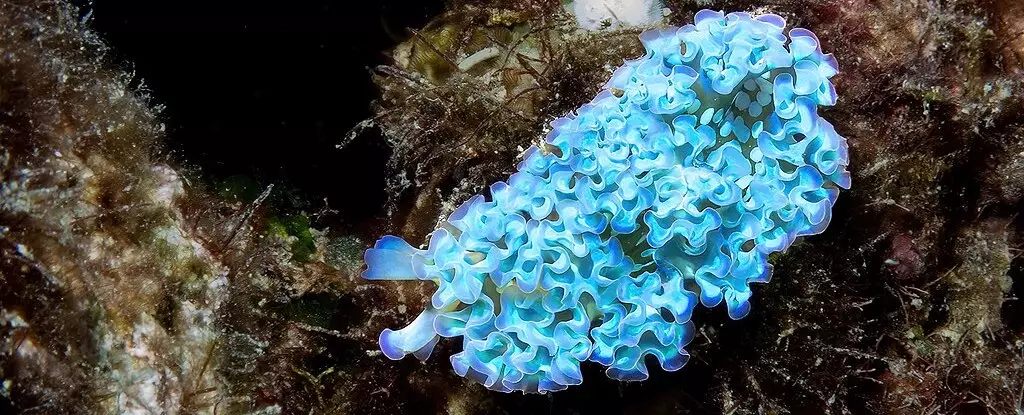The lettuce sea slug, scientifically named Elysia crispata, is far from your ordinary marine creature. On the surface, it appears to be a whimsical spectacle – its vivid greens and swirling patterns evoking images of an alien life form plucked straight from science fiction. However, this remarkable sea slug represents a deeper and far more complex narrative of survival and adaptation. This organism is an unsung hero in the study of symbiotic relationships, showcasing an astonishing ability to exploit, commandeer, and use the functional parts of other organisms. Through a process that can only be described as biological theft, the lettuce sea slug has turned the act of survival into an art form, reshaping the way we understand the intricacies of life in the ocean’s depths.
Kleptoplasty: The Art of Hijacking Life
At its core, the lettuce sea slug employs a glaringly unique strategy known as kleptoplasty, essentially a form of biological plundering. Unlike other creatures that consume food solely for nutrients, these slugs have evolved to extract chloroplasts from the algae they devour. Researchers at Harvard have painstakingly documented this process, revealing that instead of digesting these vital organelles, the slug encases them within specialized compartments in its intestines, aptly named ‘kleptosomes.’ These structures not only preserve the chloroplasts but also funnel their energy directly to the slug.
This symbiotic relationship raises profound questions about agency and adaptation within the natural world. Are we observing mere opportunism, or is there an underlying intelligence guiding this complex interaction? When the slug cunningly appropriates a part of another organism, it’s as if it’s issuing a bold challenge to the very notion of individuality in biological systems. With this dynamic, the line between consumer and consumed becomes chasteningly blurred—each slug a hybrid of its own design, intricately woven with the vitality of both its prey and itself.
The Color Code of Survival
The lettuce sea slug also flaunts a remarkable palette, morphing from vibrant greens to striking oranges depending on its dietary intake and health. Well-nourished slugs maintain a luscious green hue—a testament to their effective use of chloroplasts harnessed from algae. However, during lean times, when available food dwindles, their color shifts to orange, signaling a potential spiritual impoverishment alongside physical. This sophisticated interplay of color and health reflects a broader narrative in the animal kingdom: survival through adaptability.
What many may dismiss as a trivial aesthetic concern is, in actuality, a crucial signal for understanding the organism’s well-being and ecological status. The orange slugs, desperate for sustenance, exemplify resilience through transformation. Even in adversity, they find ways to adjust, feeding off their hijacked capabilities while perpetually flirting with despair as they hover on the brink of survival.
The Bigger Picture: Symbolism in Nature
By uncovering the mechanics of kleptoplasty, scientists are not merely cataloging another bizarre biological quirk but are challenged to reevaluate our perceptions of life itself. Elysia crispata opens a window to the potential futures of symbiosis. Could it be that nature has orchestrated a form of shared existence wherein organisms are interconnected in ways that we are only beginning to fathom?
The dazzling maneuverings of the lettuce sea slug echo beyond the ocean’s floor, resonating with themes of cooperation, resilience, and even rebellion against the stark realities of existence. In a world plagued by environmental crises and ecological breakdown, the sea slug’s maneuver shows that survival sometimes requires innovative, albeit unorthodox, strategies. Perhaps, in our own human context, we too must reimagine our societal structures, lifting elements from those around us not out of mere necessity, but as a bold assertion of our interconnectedness—a reminder that our existence is often a tapestry woven from the threads of others.
In recognizing the extraordinary capacity of this unassuming creature to thrive in its unconventional reality, we gain insight into our own human struggles and the imperative of evolution, adaptation, and survival in an ever-changing world.


Leave a Reply